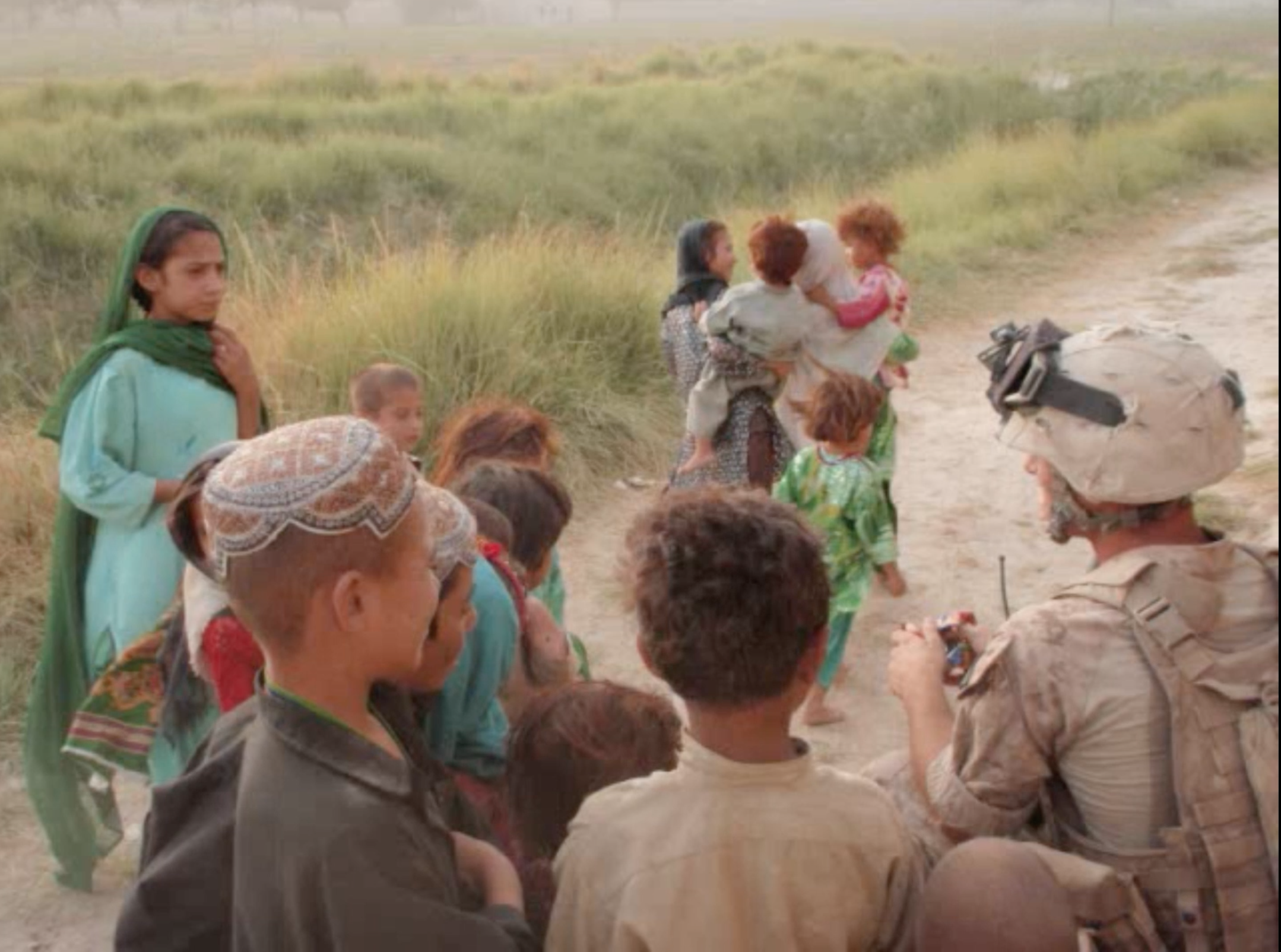
Soviet Garmser
Part One: The Jihad
“A stick does not divide flowing water.” -Pashto proverb
On April 27th, 1978, a Communist government under Noor Mohammed Taraki rose to power with the support of the Soviets and in turn sparked popular unrest. Kabul would lose control of Garmser and in doing so would ultimately create the environment where decades worth of nation building would end and the Taliban would begin. The Afghan War (1978-1992) was interrupted when Soviet forces intervened on behalf of the pro-communist government in December of 1979.
The jihad is remembered as a heroic resistance against the Soviet infidels. To this day, the people of Garmser call Russians, “Khalqis” (Commies), or people who belonged to the faction of the People’s Democratic Party of Afghanistan. Only Lashkar Gah, with its middle class education, was the Communist stronghold in Helmand where Garmser was a stronghold of conservatism. The Commies implemented reforms on education, marriage, religion and how power was to be divided. Tribal leaders who had hundreds of acres were left with a fraction of what they owned. Long story short, this didn’t go over well.
Tribal leaders formed alliances as the Commies continued to ignore local culture, customs and were, in general, all around douche bags. Shah Wali Khan, an important tribal figure in Garmser, summed it up well: “The Russians abused the mullahs and the elders. The communist government oppressed us too. They buried people alive or poured boiling water on them. People were fleeing.”
Nasim Akhundzada from northern Helmand led the first major battles of the jihad and scored several early victories for the mujahideen. Success didn’t last long once the Soviets sent 4,000 soldiers to take Garmser, which by then had been left in the hands of Shah Wali Khan.
By this point, the United States, Pakistan and Saudi Arabia were sending money and aid to the mujahideen to weaken the Soviets. The tribes knew they couldn’t go camel versus tank so they adjusted their tactics for the fight against the Commies to be a long one. Upgraded machine guns, rifles, explosives and gear began to sift over the border of Pakistan into the Mujahideen’s hands.
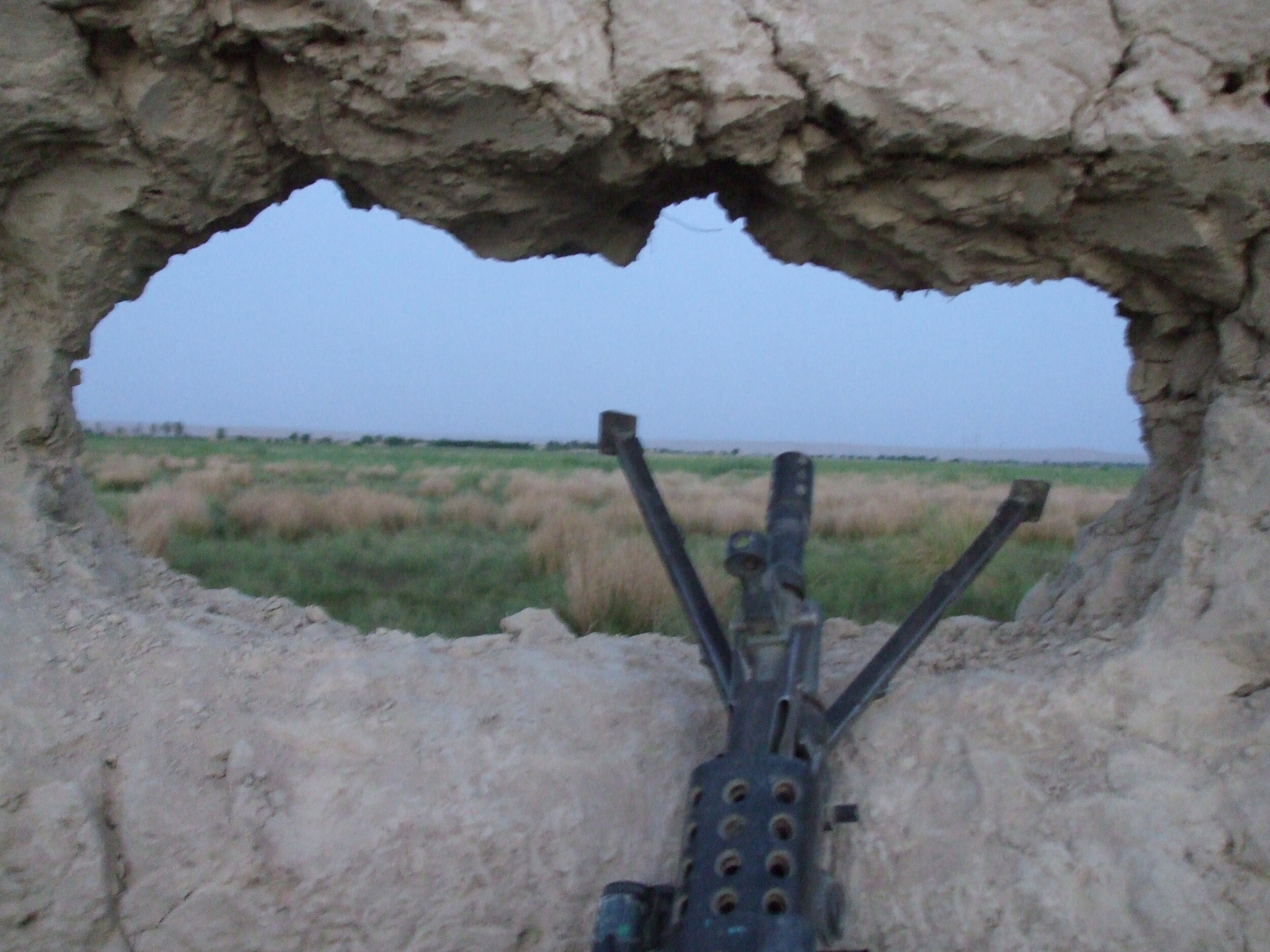
Soviet Garmser
Part Two: Amir Agha
“Graveyard of Empires”
From day to day, the residents didn’t see Soviet soldiers, they saw Soviet shells and bombs blow up their homes and friends. The airstrikes would do more damage to civilians than harm the Mujahideen. Hatred grew deeper among the locals as more of them fled further south.
In 1982, the Soviets amassed tanks, armored vehicles, and troops in the Garmser district center to clear out Amir Agha, a village to the east of modern day Jugroom Fort. Having grown accustomed to the attempted annual Soviet land grab, over 100 mujahideen fighters descended upon the area, but the jihadists were beaten back day after day until they reached Amir Agha itself.
Within the village was a local shrine among long lines of fighting positions entrenched along a dune. As the story goes, 52 bombs fell around the shrine with one hitting it only to deflect harmlessly off to the side. The locals took it as a sign from Allah making them fight fanatically. What was in store for the Soviets would only add to their fanaticism. Once the bombers left, the vehicles resumed their roll into the village.
Mujahideen waited behind mud walls with barrels pointed through loopholes waiting for the convoy to enter a marshy area where they ambushed them with machine guns and RPGs. It was a slugfest. Mud walls that can be as thick as one meter went head to head with Soviet armor.
What transgressed wasn’t a miracle, it’s just war. The Soviet vehicles bogged down in the marsh and were hammered with RPGs turning the advanced technology into sitting armored ducks. Commies stuck in the kill zone abandoned their vehicles and fled the onslaught. Fearing more vehicles getting stuck, the Soviet commanders called off the attack and called in more airstrikes to cover their retreat.
There are still two armored personnel carriers that are burnt out and rusted stranded in shallow water north of the shrine. The locals left them there as a symbol of Allah’s salvation.

Post-Soviet Garmser
Part One: Civil War
“A crooked load does not reach its destination.” -Pashto Proverb
With the government in Kabul obliterated so were the district governments in the provinces. Having no governmental oversight, the tribal leaders took it upon themselves to harness the power flapping in the wind.
It didn’t take long for people to die and for tribes to ally with some and condemn the others. From 1989 to 1990 the tribes in Garmser battled with only 150 fighters killed in the action. It could have been much worse had the victorious Alizai tribe exacted revenge upon the losers. Instead, they held a Shura with all the tribes in Garmser. It was decided that a man named Abdullah Jan would become district governor. The two main players in the civil war were Nasim, the man who pushed poppy into the farmlands, and Yahya who had other ideas than Nasim made them mortal enemies. Neither would live to see any reward for the turmoil they caused as both were assassinated in the early 1990s.
Abdullah Jan was at the mercy of the tribal leaders. He sought to strengthen his position through marrying Shah Wali Khan’s sisters solidifying his connection with the powerful Alizai tribe. Garmser enjoyed a peace, regardless of its unsteadiness, while Helmand as a whole burned around them until around 1993.
As with most civil wars in a power vacuum, there’s always a bigger fish. That fish came in the form of Rassoul Akhundzada, a powerful warlord who swept down from the north-western province of Herat. Another short peace followed in 1993, but wouldn’t last long as the threat to the east grew larger and much more powerful than any tribal leader could fathom.
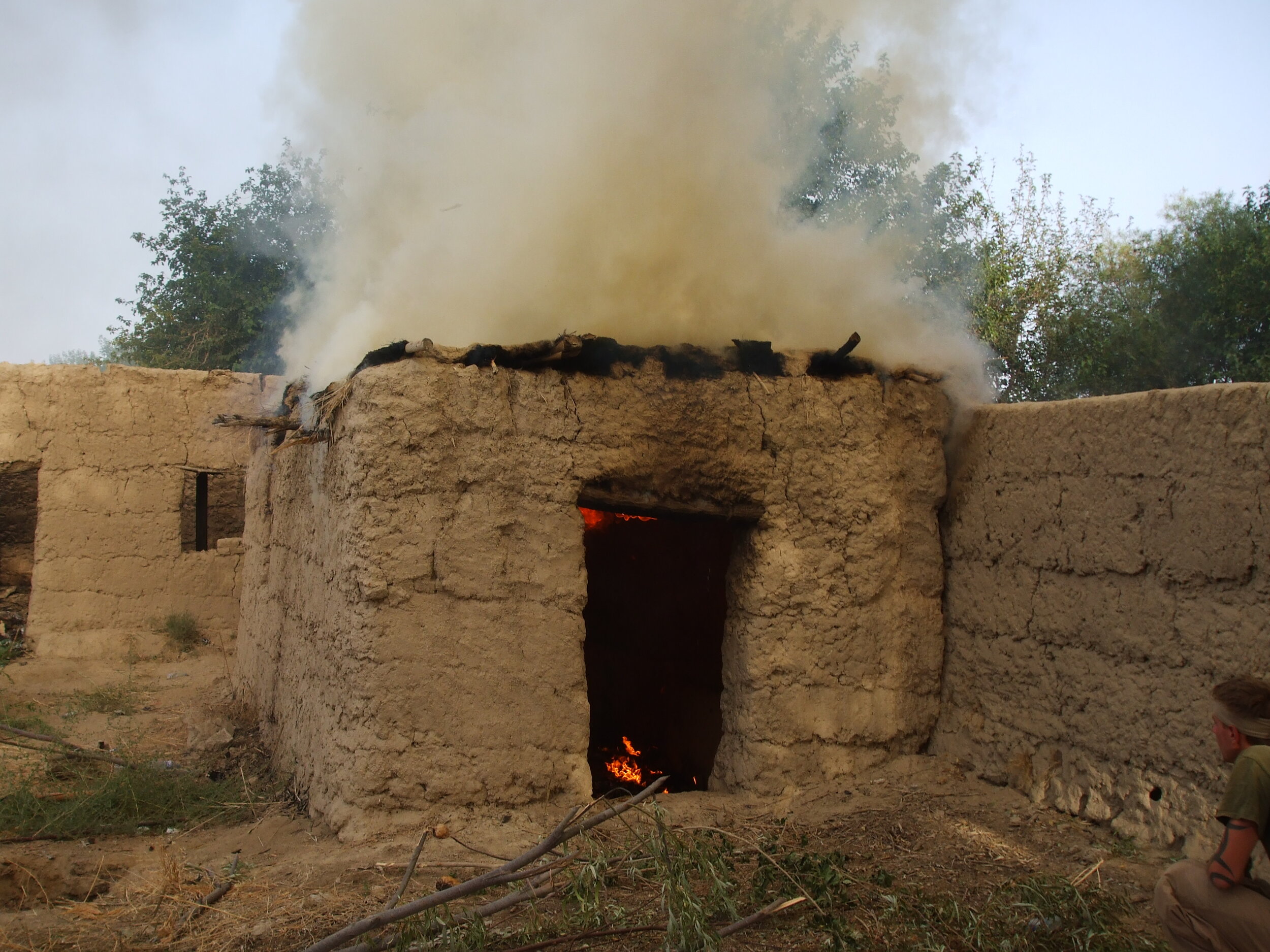
Garmser: Taliban Takeover
Bigger Fish (1994-2001)
“Now the responsibility is on the mullah’s shoulders.” -Pashto Proverb
Tribal leaders and warlords had taken to exploiting the common folk leading to outrage. Afghanistan was a volcano ready to erupt.
Madrassa’s have taught generations of Mujahidin for centuries. At the time, a sizable group of trained Mujahidin who were sickened by what was happening in their country called themselves, “Taliban”, meaning students of Islam.
In November of 1994, this group of Taliban decided to take over and implement Sharia law and started their takeover in Kandahar City. Mullah Mohammed Omar, who had been running a Madrassa in Kandahar was made the leader. He had ties to Uruzgan (Future destination for BLT 1/6) province with his tribe, the Hotak who were rivals of the Durrani ruling class.
The Taliban moved on Helmand in December of 2004 with 500 or so fighters. Abdullah Jan, alleged governor of Garmser had no clear support from tribal leaders and turned the district over to the Taliban. Shah Wali Khan left Garmser and sought refuge in Pakistan. Abdullah Jan would resist until September of 2005 before all of Helmand succumbed to the Taliban.
From 1995 to 2001, the Taliban in Helmand was tolerable. Within Helmand province it was not known as the brutal regime as told in other parts of the country (allegedly). This might be because they depended on the people for their opium output as their main source of income.
“For those today who claim that Afghanistan is ungovernable, Taliban rule offers a striking counter-example” … “Put simply, the Taliban could govern the ‘ungovernable’ land (Malkasian, 69).”
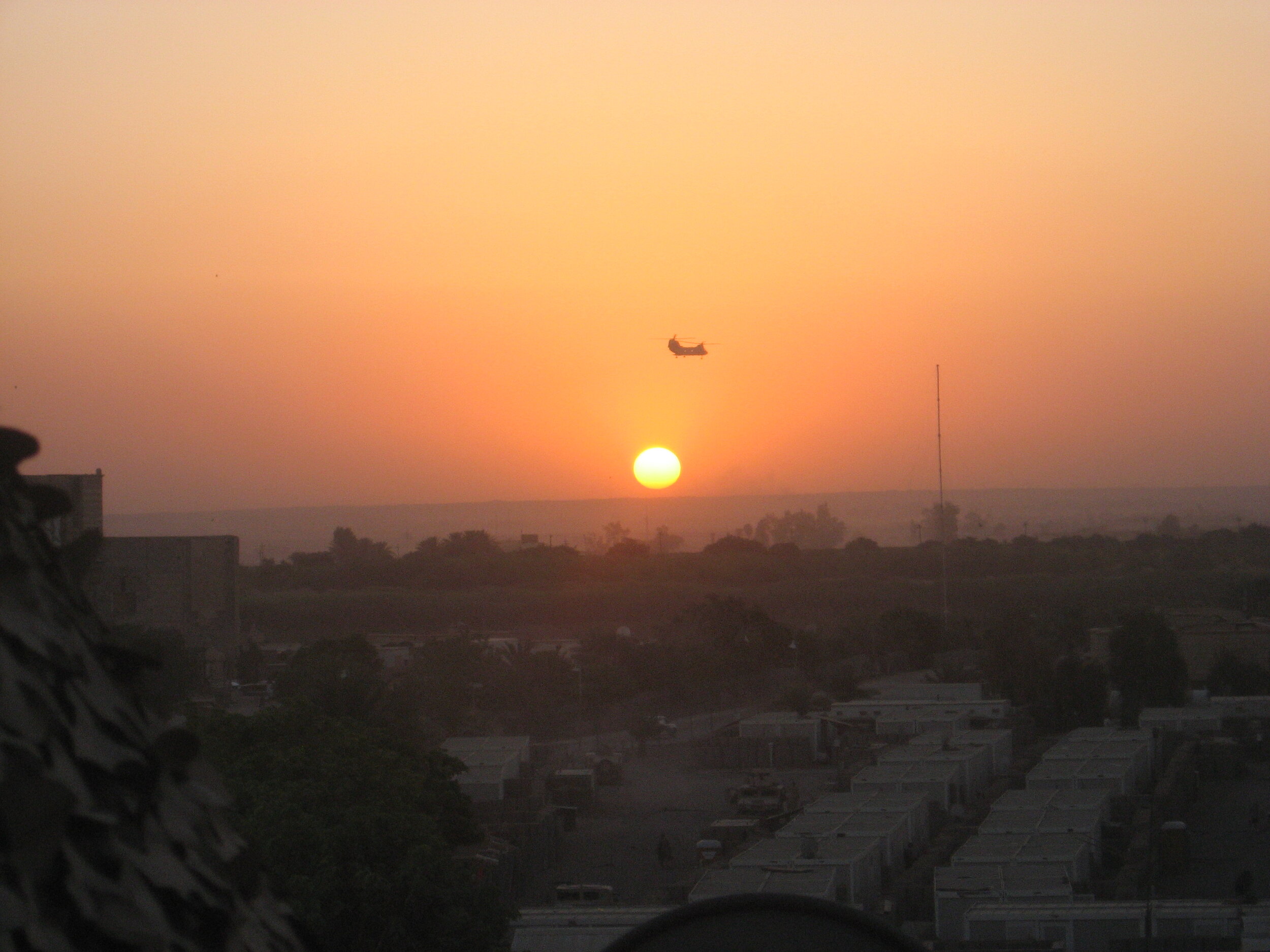
The Taliban
Part 1: 2001-2005
“What is sowed will be reaped.” - Pashto Proverb
Thor swept down from the mighty Warthog riding the lightning named Gatling and along with the Northern Alliance they sent the Taliban limping into Pakistan.
Newly appointed Afghani leader, Hamid Karzai, a descendant of the Popalzai tribe, the tribe of Afghanistan’s origins gave him a legitimacy to the reins of the country. Karzai was actually a step in the right direction, but those who do not study history are doomed to repeat it. Russia neglected Garmser, and so did Karzai, the United States and NATO.
When Kandahar fell in December of 2001, the khans of Garmser organized a shura led by Said Omar, Shah Wali Khan and several others to settle the surrender of the Taliban. It must have gone well because the Taliban commanders left their weapons with the khans while they went to Pakistan and waited.
Abdullah Jan was left in charge of Garmser as district governor and was also approved by Karzai, but that meant little with no oversight or help from the Afghani government.
From 2001-2006, the American units at Kandahar rarely went to Garmser, nor advisors or special forces. In 2004, BLT 1/6 of the 22nd MEU were slaying souls in the Oruzgan province just to the north of Kandahar. Little if any attention was spared to this southern portion of the country that had spelled certain doom for Russia.
Dadullah Lang commanded the Taliban in Helmand, Kandahar, Oruzgan, and Zabul. He was a one-legged commander known for being strict and being at the tip of the spear for any and all operations.
It wasn’t until December 2004, when Abdullah Jan was removed as district governor in a power-grab for Sher Mohammed to become the top poppy cultivator. The Taliban didn’t rush in, they didn’t need to. They now had a Taliban sympathizer and corrupt governor at the helm in Garmser. The Taliban wormed their way back in with small teams of fighters who allied themselves with young men in the villages.
Only a border police force of 400 militia in Safar stood between Garmser and the Taliban.
By mid-2005, the scene was set.

The Taliban
Part 2: 2005-2006
Whoever controlled the flow of poppy also controlled Garmser.
With Abdullah Jan gone, the province unraveled. By late summer of 2005, Baram Chah, a main cog in the opium trade fell to the Taliban.
In February, 2006, Dadullah Lang, the one-legged Taliban commander, kicked off a spring offensive in Helmand’s three northern districts of Musa Qala, Nowzad, and Sangin. NATO had finally sent 1,200 British and 1,700 Afghan soldiers to Helmand, but were used to fight Lang which left the rest of Helmand wide open. It was too little, too late.
Whomever was perceived as the strongest, NATO or Taliban, would determine who the tribes sided with. When the Taliban arrived in June of 2006, it came as no surprise when Shah Wali Khan and the other tribal leaders returned their weapons they had kept since 2001. The tribal leaders had become obsessed with gaining power regardless of where it came from.
Abdullah Jan, the former mujahideen commander, organized a last stand in Lashkar Gah, but was forced to escape completing the Taliban takeover of Garmser.
Missed opportunities were plenty from 2001-2006 for the Afghani government and/or NATO to intervene in Helmand. Sadly, they repeated the same mistakes the Russians had made by ignoring the province. The explosion of poppy production in Helmand had turned it into a gold mine and thus, a force to be reckoned with.
Afghanistan sat in the shadow of the Iraq War during 2003-2006. Helmand’s increasingly hopeless situation would prove fatal in the years to come.
Up next:
Part 1: History of Iraq - Al Anbar
Intel: Malkasian, Carter. “War Comes to Garmser.”
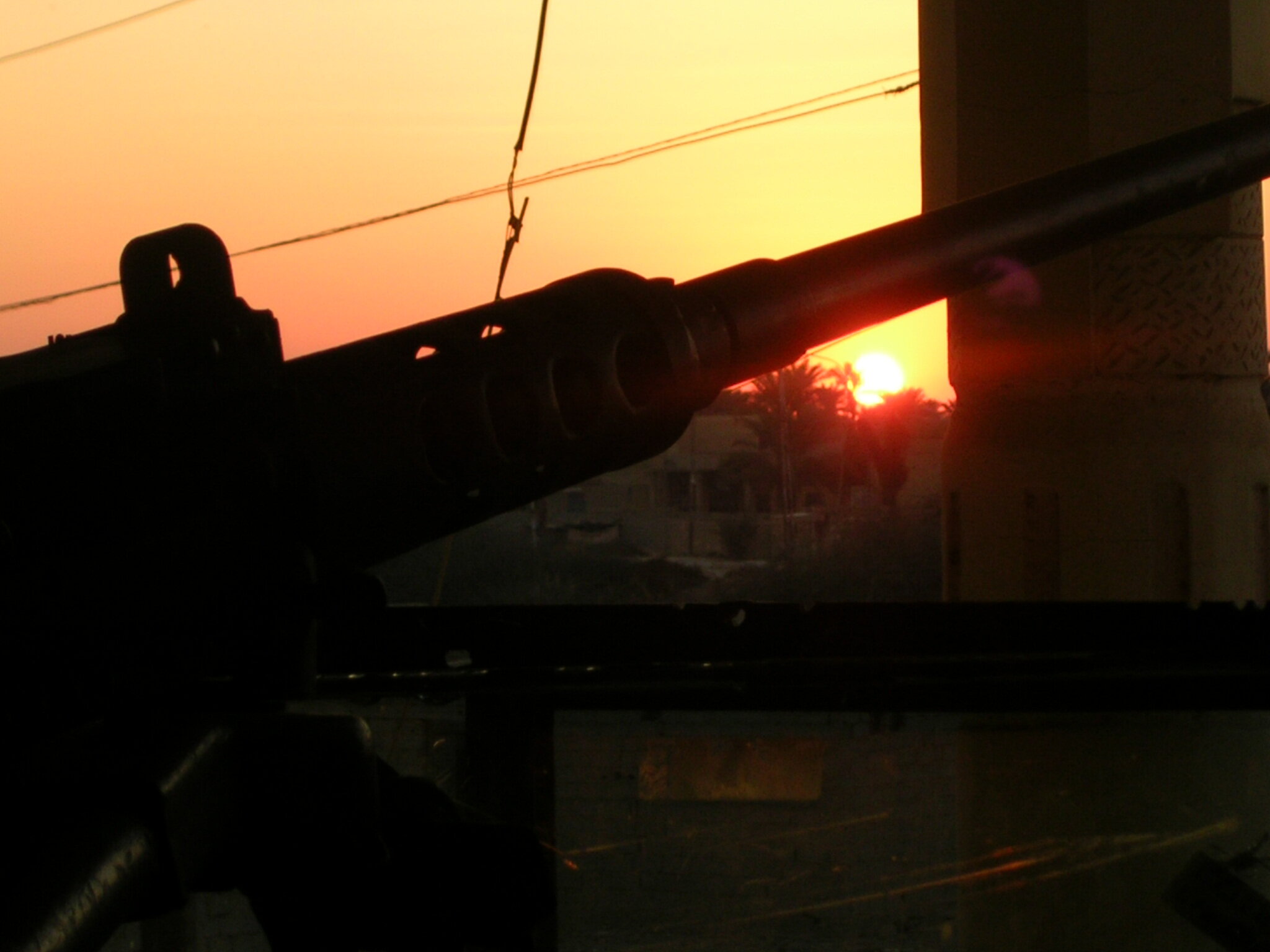
Part 1: A Sunni Life
The inevitable is always around the corner.
Geography:
Al Anbar is the westernmost province in Iraq, or what the Marine Corps widely referred to as the Iraqi Wild West. It formed a border with Saudi Arabia, Jordan, and Syria. The Euphrates River cuts through the province from northwest to southeast, but west of the river is nothing but desert and few towns. Along the river rests the lifeblood of the province, the essence of Anbar. Roads stretched from Syria to Baghdad that ran parallel on the north and south sides of the Euphrates River. Main Supply Route (MSR) Mobile was on the north side of the river and MSR Michigan to the south.
Anbar encompassed all of the GWOT Marine’s favorite locations: Ramadi, Fallujah, Haditha, Hit, and Al Qa’im. Nearly half of Iraq’s 26 million people live in or around Mosul, Baghdad and Basra. Anbar’s population was estimated to be around 1.5 million with 450,000 of that being in Ramadi, the capital of al Anbar.
Saddam Hussein and the Ba’ath Party:
Becoming president of Iraq in 1979, Saddam Hussein, a Sunni, funneled money to Sunni’s in Ramadi and other areas of the province. Northern and Western Iraq are largely Sunni dominant. Kurds are a Sunni people, but are not Arab and are therefore shunned by Arab Sunni’s while being secluded to northern Iraq. On March 16, 1988, Saddam gassed Halabja, Iraq, a town of 70,000 Kurds. The amount of people killed ranges from 5,000-45,000 due to conflicting and inaccurate reports.
The Kurds account for 20% of Iraq’s total population. Shi’a is the third group of muslims living in Iraq and constitute 50-60% of the population whereas Sunni’s account for 20-30%. This contrast between Shi’a and Sunni becomes very important as the tale of Ramadi unfolds. A network of elite Sunni tribes comprised Saddam’s Ba’ath Party who maintained loyalty among the other tribes with lavish gifts, land and weapons. The army and government in Al Anbar, being largely Sunni, were made very comfortable by the Ba’athists.
For centuries, Sunni’s had dominated the Iraqi government. Starting in the 1920’s, the Sunni-led government began to instill a sense of nationalism to the state rather than to only their tribe. Over the decades, the sense of nationalism shadowed Islam and the tribes, but they were only hidden, not forgotten. Regardless of how secular Iraq had become by the turn of the 21st century, tribes and Islam held great sway in their culture, an overlooked aspect when the United States began to engage with Iraqi leaders.
Imams were the most common type of religious leader in Al Anbar. Those who had furthered their studies were called Alim, or scholars, and they were able to issue fatwas (religious orders) that were taken seriously by the Iraqis. Mufti’s were experts on Sharia Law and were also able to issue the respected fatwas regarding legal matters.
As Malkasian writes, “Throughout Anbar, religious leaders, US forces, and budding insurgent leaders were the only sources of authority left.” (Circa 2003, post-invasion)
When Saddam’s Iraqi system of control dissolved, so did the authority of nearly everyone mentioned above. Without the flow of money and support from Baghdad, Al Anbar province turned the corner.
Up Next:
Part 2: Inevitable Insurgence (2003-2005)
Intel Extract: Malkasian, Carter. “Illusions of Victory.”